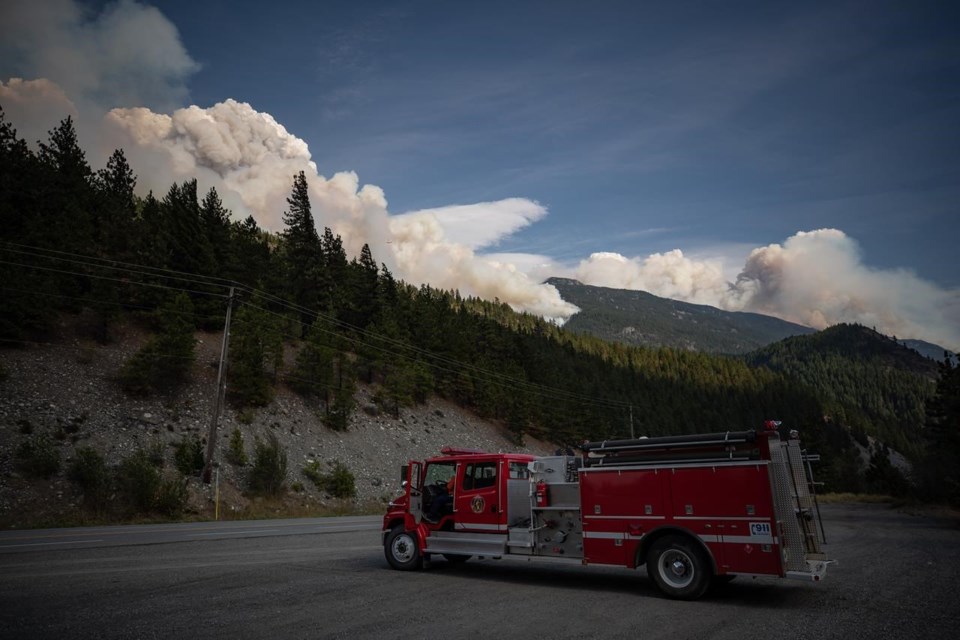VANCOUVER — British Columbia has spent and prepared like never before to fight wildfires, only to find this year's fire season is off to a damp start.
Cooler temperatures, spring rains and fewer lightning strikes are contributing to a slower-than-normal start to the wildfire season in the province, Matt MacDonald, lead forecaster with the BC Wildfire Service, said Friday.
The mild, wet weather is predicted through June, but warmer-than-normal temperatures are forecast for later in the summer, raising the wildfire threat, he said at a news conference on the seasonal wildfire outlook.
"We're expecting the slow beginning to continue, but as we round the corner into July and August, that really obviously makes up the vast majority of our fire season, and as we trend toward these normal warmer temperatures, we could see fire activity grow through the latter half of the summer," said MacDonald.
Wildfires last year destroyed most of the village of Lytton and prompted almost 200 evacuation orders during a near-record season where 1,610 wildfires charred 8,682 square kilometres of land, primarily in southern and southeastern B.C.
So far this year, temperatures have been between two and three degrees lower than normal and lightning strikes reported for May were less than 3,000, when the average number for the month is about 16,000, MacDonald said.
B.C. has yet to report a single lightning-caused wildfire this year, while the average is 35 lightning-sparked fires every May, he said.
Despite the wet spring, areas in the Cariboo, Thompson, Okanagan, Boundary and Kootenay regions in central and southern B.C. are appearing dry and at wildfire risk, MacDonald said.
"We've been lucky. We've seen a total of 137 wildfires so far this season."
That figure is about 60 per cent of the five-year average for wildfire starts at this time of year, MacDonald said.
Those 137 wildfires have burned about 600 hectares this year, which amounts to about five per cent of the 25-year fire average for the spring.
Forests Minister Katrine Conroy said despite current low fire hazard forecasts, B.C. made the largest investment in its history this year at $359 million to prepare and protect people and communities from wildfires.
"The province is ready for wildfire season and what it takes to keep people and communities safe in this province," she said. "We have to be careful, and we have to be ready, and we are."
MacDonald said the likelihood of another heat dome weather event like the one that resulted in almost 600 deaths last summer appears low this year, but the advance timeline for such a forecast is limited to about two weeks.
This report by The Canadian Press was first published June 3, 2022.
The Canadian Press



